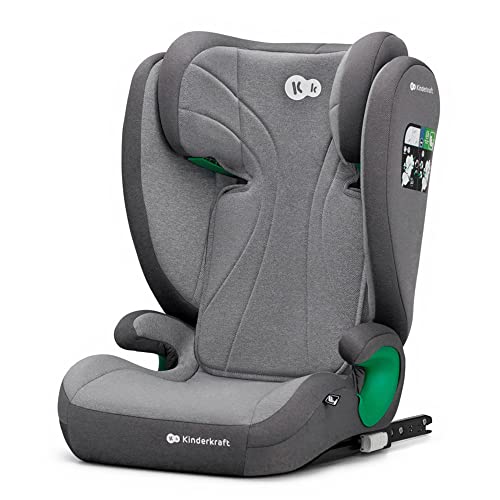A New Trend In Prams

Prams and Pushchairs: A Comprehensive Guide for New Parents
Navigating the world of baby transportation can be frustrating for new parents, especially when it pertains to choosing between prams and pushchairs. Each alternative offers unique advantages and limitations, implying that making an informed choice is crucial. This post aims to provide a thorough understanding of prams and pushchairs, their differences, functions to consider, and pointers for choosing the best one.
Comprehending the Basics: Prams vs. Pushchairs
Prams and pushchairs are terms typically used interchangeably, however they describe different types of baby transportation systems.
Definitions:
- Prams: Traditionally developed for newborns and infants, prams have a big, fully flat bassinet that allows for ideal comfort and security throughout early phases of a child's life.
- Pushchairs: Designed for older babies and toddlers, pushchairs normally have an upright seat that is suitable for children who can support their head and neck. Premium Pram come with adjustable recline alternatives.
Secret Differences
| Feature | Pram | Pushchair |
|---|---|---|
| Style | Flat bassinet | Upright seat |
| Age Suitability | Newborn to around 6 months | 6 months to 4 years |
| Mobility | Generally heavier, less foldable | Frequently lightweight and foldable |
| Convenience | Cozy for newborns, snug fit | Adjustable, can be reclined |
| Use | Perfect for strolls and leisure | Versatile for everyday activities and travel |
Functions to Consider When Choosing Prams and Pushchairs
Security Features
- Harness systems (5-point vs. 3-point)
- Braking systems (foot-operated vs. hand-operated)
- Stability and toughness of the frame
Weight and Portability
- Think about the weight of the pram or pushchair
- Try to find a model that folds easily for transport
Size and Storage
- Check measurements for fitting through doorways and in vehicle trunks
- Search for extra storage alternatives like baskets or pockets
Comfort
- Padded seats and adjustable recline positions
- Suspension systems for smoother rides on rough terrains
Weather Protection
- UV defense in sunshades
- Options for rain covers and windshields
Wheels and Maneuverability
- Wheel size and type (repaired vs. swivel)
- Suspension systems that help handling and convenience
Longevity
- Designs that convert from pram to pushchair
- Stronger frames that can accommodate growing children
Popular Types of Prams and Pushchairs
When thinking about prams and pushchairs, moms and dads frequently find numerous designs accommodating particular needs. Here are some well-known types:
1. Standard Prams/Pushchairs
These are excellent all-rounders, designed for everyday usage with a durable frame and ample storage space. They are often adjustable and can deal with numerous terrains.
2. Travel Systems
These consist of a safety seat and a stroller that can be utilized together, making it simple to move the baby from the automobile to the pram without waking them up.
3. Umbrella Strollers
These are lightweight and foldable, ideal for quick getaways and travel. While convenient, they often do not have a few of the security and comfort features discovered in much heavier models.
4. All-Terrain Strollers
Developed for off-road experiences, these strollers have larger wheels and a more rugged frame, making them perfect for active families.
Selecting the Right Pram or Pushchair
When choosing the best pram or pushchair, parents must take the following actions:
- Assess Lifestyle Needs: Consider how you will utilize the pram or pushchair (everyday walks, travel, uneven surface) and select appropriately.
- Test Drive: It's useful to physically test the models at the store, checking for handling, convenience, and weight.
- Research Brands: Look at reviews and suggestions from other moms and dads about particular brand names or models.
- Think About Future Needs: Think ahead to guarantee the choice will work as the child grows. Convertible designs offer versatility.
- Budget plan: Set a budget plan however likewise aspect in quality and longevity. Sometimes investing more at first can save costs in the long run.
Frequently Asked Questions
What is the best age to begin using a pushchair?
Many pushchairs can be used for babies from about 6 months old when they can effectively support their heads and necks. Make certain to inspect the maker's requirements.
Are prams ideal for newborns?
Yes, prams are ideally suited for newborns due to their flat bassinet style, supplying a comfy and safe environment.
How do I clean up a pram or pushchair?
Constantly describe the maker's guidelines, but many covers are removable and can be cleaned. Wipe down the frame with a moist fabric and prevent using extreme chemicals.
Can I utilize a pram or pushchair on public transport?
Various designs differ in size; lightweight and foldable options are generally better for buses or trains. Nevertheless, always examine for transportation guidelines in your location.
For how long can I utilize a pram or pushchair?
It normally depends upon the weight limitation specified by the maker, often between 15-50 pounds, or until your kid no longer wishes to be pressed.
Selecting in between a pram and a pushchair is a considerable decision that caters to the way of life and needs of both the moms and dad and the kid. By comprehending the distinctions in between the two, assessing critical features, and selecting the right model, parents can guarantee they have a safe, comfy, and useful transportation solution for their children.
Arming oneself with understanding provides parents not only comfort however likewise the confidence to make the very best option for their child's early adventure into the world. Different way of lives demand various solutions, so taking the time to research and test what fits can relieve a few of the tensions that feature brand-new being a parent. Happy walking!

